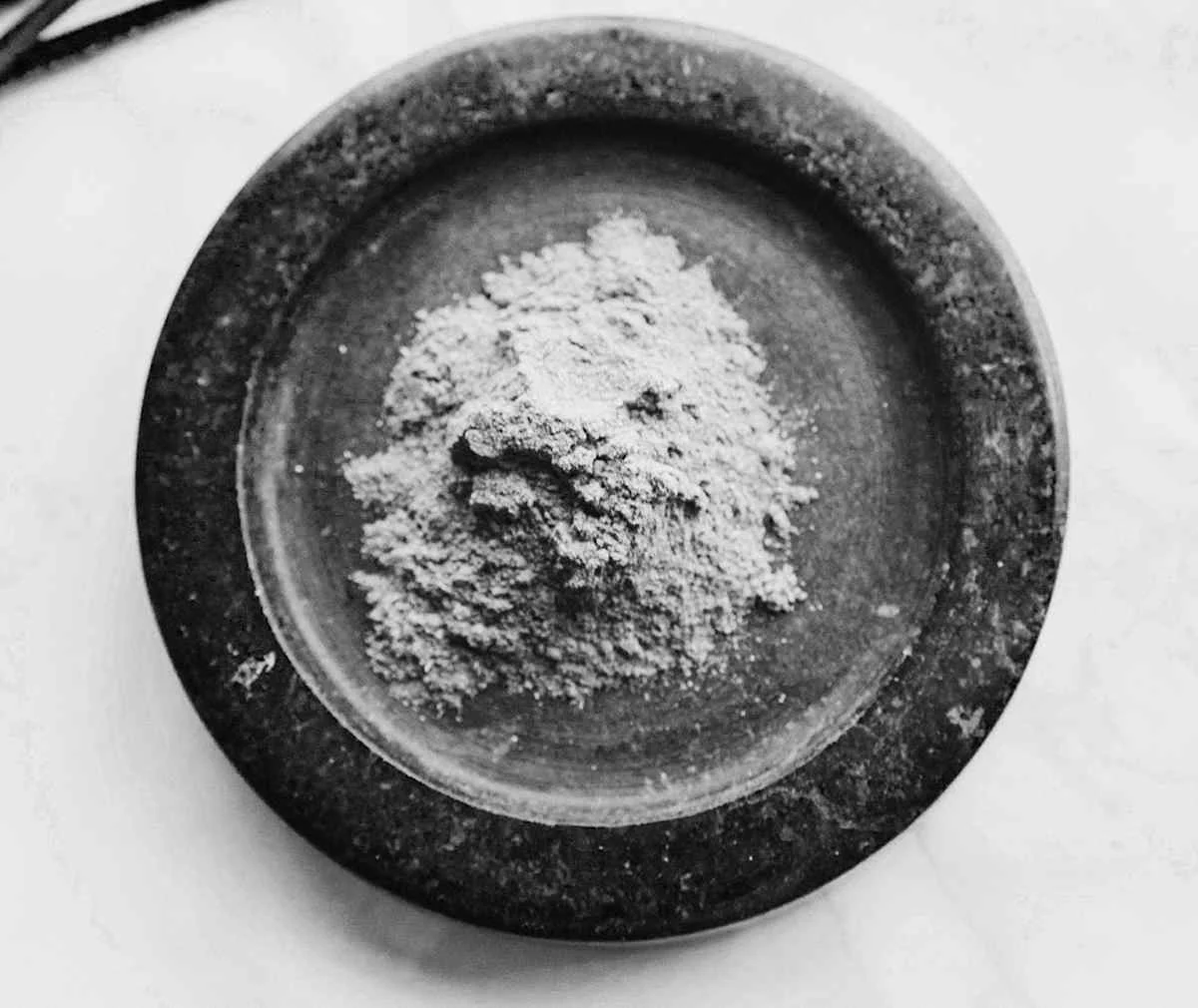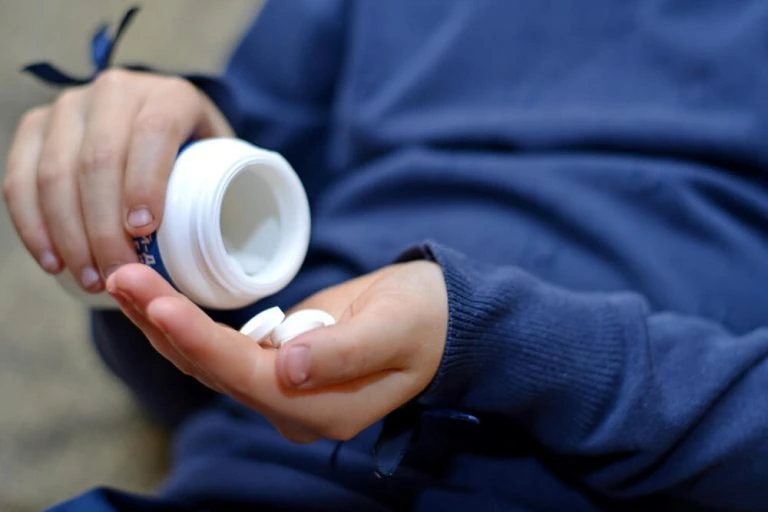Desomorphine
Desomorphine is an opioid drug that is listed as a Schedule I controlled substance under the Controlled Substances Act.

Common Trade Names: Permonid
Other Names: Krokodil, Crocodil, Russian Magic
A semi-synthetic opioid, desomorphine is ten times more potent and has a faster onset of action but shorter duration than morphine. It works by binding to and activating opioid receptors in the central nervous system or CNS. The µ or mu receptors are the ones mainly responsible for the analgesic and euphoric properties of the drug. However, despite these seemingly positive medical benefits, desomorphine has no approved therapeutic application and is considered an illicit substance in the United States, with a high potential for abuse, dependence, and addiction.
Why People Use Desomorphine
As previously mentioned, there is no accepted medical use of desomorphine in the United States. In fact, it has been considered as a controlled substance since 1936. The drug has been more successful in other countries, however. In Switzerland, desomorphine is used under the brand name Permonid as a fast-acting painkiller.
As an illicit substance, desomorphine is typically available from illegal sources that ply their trade over the internet. It is commonly abused because of its effects that are similar to other opioids, including reduction of anxiety, tension, and aggression.
How Desomorphine Is Abused
Desomorphine can be synthesized at home from codeine, by boiling the tablets using a diluting agent like gasoline, iodine, phosphorus, or even paint thinner. This results in an impure suspension that contains desomorphine. This substance is then injected intravenously by those who use desomorphine for its opioid-like effects.
Long-Term Side Effects of Desomorphine
The most common adverse effects associated with long-term desomorphine use include:
- Damage to blood vessels, bones, and muscles
- Multi-organ failure
- Tissue necrosis
- Gangrene at the injection site
- Skin abscesses and scarring
- Bacteremia or the circulation of bacteria in the blood
- Osteomyelitis or infection of the bone
- Meningitis or the swelling of the membranes that protect the brain and spinal cord
- Speech and motor skill impairment
- Liver damage
- Kidney damage
- Pneumonia
- Thyroid disorders
- Jaw osteonecrosis or the disruption of circulation in the jaw bone
Symptoms of Desomorphine Overdose
Due to the synthetic nature of desomorphine, it’s difficult to determine its toxicity using conventional drug testing. However, it has been found to cause similar overdose effects as opioids. These include:
- Miosis or extreme shrinking of the pupil
- Flushing of the skin
- Urinary retention
- Nausea and vomiting
- Sedation
- Respiratory depression
One of the drugs used to treat desomorphine overdose is naloxone, an opioid antagonist that is also used in other cases of opioid overdose. In particular, naloxone can help restore breathing to a patient with severe respiratory depression.
Signs of Desomorphine Addiction
Schedule I controlled substances such as desomorphine are associated with a high potential for abuse, dependence, and addiction. They do not have any approved clinical or medical use and are considered illicit drugs. Desomorphine is particularly a menace in other countries like Russia; as of 2014, approximately 1 million individuals in the country were recorded to be addicted to the drug.
The Fifth edition of the Diagnostic and Statistical Manual of Mental Disorders (DSM-5) lists 11 criteria for substance use disorder, all of which are applicable to desomorphine addiction.These are:
- Taking desomorphine frequently, in excessive amounts, and for an extended period of time
- Not being able to stop or reduce desomorphine use despite attempts and a desire to do so
- Spending a lot of time getting, using, or recovering from desomorphine
- Feeling cravings for desomorphine
- Having problems with commitments or responsibilities due to desomorphine use
- Having interpersonal or social problems but still continuing desomorphine use
- Missing out on important social, occupational, and recreational activities because of desomorphine use
- Continuing to use desomorphine even if it endangers oneself
- Continuing to use desomorphine despite it causing or aggravating medical conditions
- Tolerance, which means needing higher doses or more frequent intake of desomorphine to achieve its desired effects
- Developing withdrawal symptoms after abrupt discontinuation of desomorphine use
Symptoms of Desomorphine Withdrawal
According to a study, desomorphine withdrawal symptoms can manifest after withholding the drug for 4 hours even if the patient has used the drug for only 3 weeks. What’s more, the effects are like those heroin withdrawal. These include:
- Agitation
- Anxiety
- Muscle aches
- Increased tearing
- Insomnia
- Runny nose
- Sweating
- Yawning
- Abdominal cramping
- Diarrhea
- Dilated pupils
- Goosebumps
- Nausea and vomiting
If you or someone you know are suffering from the effects of desomorphine withdrawal, the best thing to do is to seek professional help. Get in touch with your doctor or a medical detox facility so that you can receive proper attention and care.
Desomorphine Detoxification
It’s difficult to deal with desomorphine withdrawal symptoms on your own. What’s more, it can lead to even more undesirable results. Your best option is to undergo desomorphine detoxification so that you can remove the presence of the drug in your system through safe and effective means. When undergoing a desomorphine detox program, you can expect the following to happen:
- A gradual reduction of the amount of desomorphine you consume every day.
- A combination of medications that can help suppress or treat individual withdrawal symptoms.
- A regimen of nutritional supplements that can help restore your body to better health.
- A team of medical professionals to provide constant monitoring to ensure your safety and comfort throughout the entire process.
Rehabilitation and Treatment for Desomorphine Addiction
While beating desomorphine addiction can be challenging, it’s not impossible. The key is to accept the fact that you need help and then seek that help from a reliable institution. Early intervention is also crucial. With medical and rehabilitation professionals working with you or your loved one, you can certainly beat desomorphine addiction and lead a sober life. There are two options for addiction treatment, the most suitable of which will depend on your situation.
- Inpatient desomorphine addiction treatment: Also called in-house treatment, inpatient addiction treatment is ideal for moderate or severe cases. You may have a high risk of non-compliance to treatment protocols or are unable to attend treatment sessions of your own volition. In inpatient treatment, you’re required to stay within the facility until the rehabilitation program is complete. You will also receive a combination of medications and psychological treatments, all of which will be carefully monitored by medical professionals.
- Outpatient desomorphine addiction treatment: If you have a mild case of addiction and have proven that you’re able to commit to a rehabilitation program, outpatient treatment may be more ideal. In this type of rehabilitation, you’re allowed to stay home and continue your usual activities such as going to work or school. However, you’re required to attend therapy and other treatment sessions at a designated facility.
Get the Help You Need and Deserve
Early intervention is crucial for successful addiction treatment. If you think you or someone you know might be suffering from addiction, don’t hesitate to get in touch with Better Addiction Care at (800) 429-7690. Our recovery support advisors can help you find the best treatment programs and facilities to start your journey towards sobriety.
In addition, Better Addiction Care advisors can also verify your insurance coverage for drug addiction treatment. If you don’t currently have insurance, we can help you find ways to help finance your rehabilitation.
A Brief History of Desomorphine
Desomorphine was first synthesized in the United States in 1932 and received a patent in 1934. In 1940, the pharmaceutical company Hoffman-LaRoche introduced it to the Swiss market under the trade name Permonid. It was a product of several laboratory experiments that aimed to create a morphine alternative that has a better side effect profile.
However, subsequent clinical trials demonstrated that desomorphine, when compared to morphine, has an even more significant dependence and abuse potential. This led to the permanent withdrawal of Permonid from the market in 1952. In the United States, desomorphine is considered an illegal drug, with illicitly manufactured versions of it being sold under the name krokodil.








